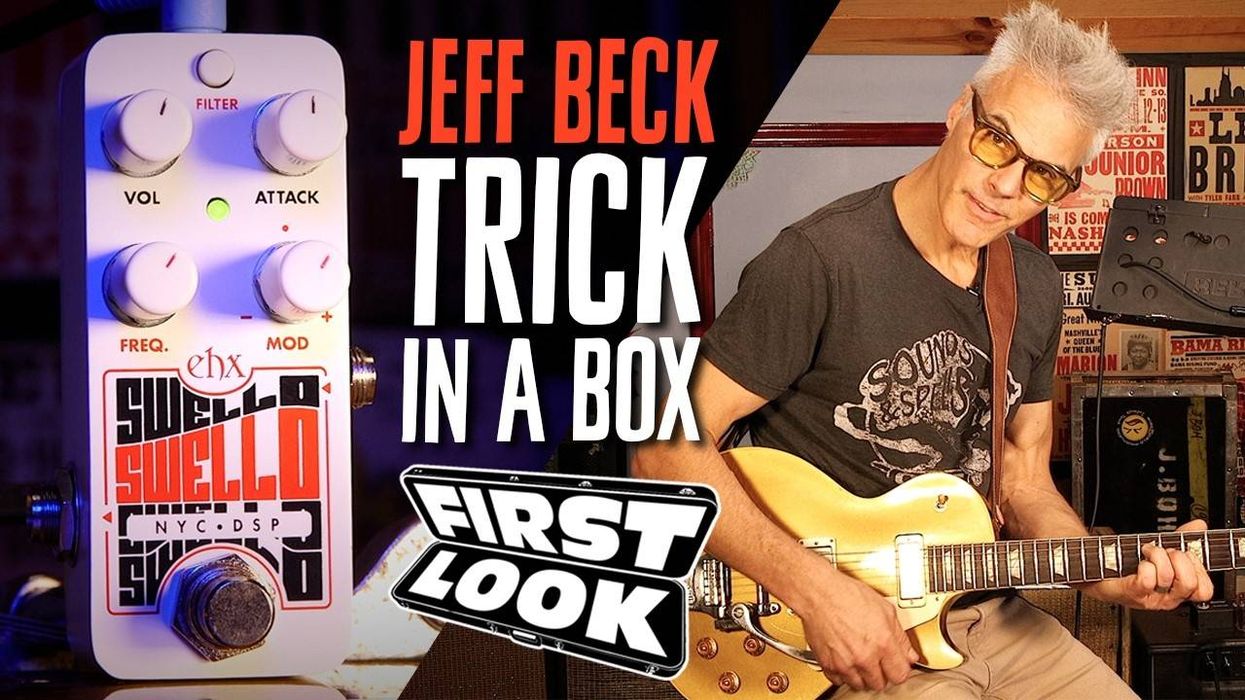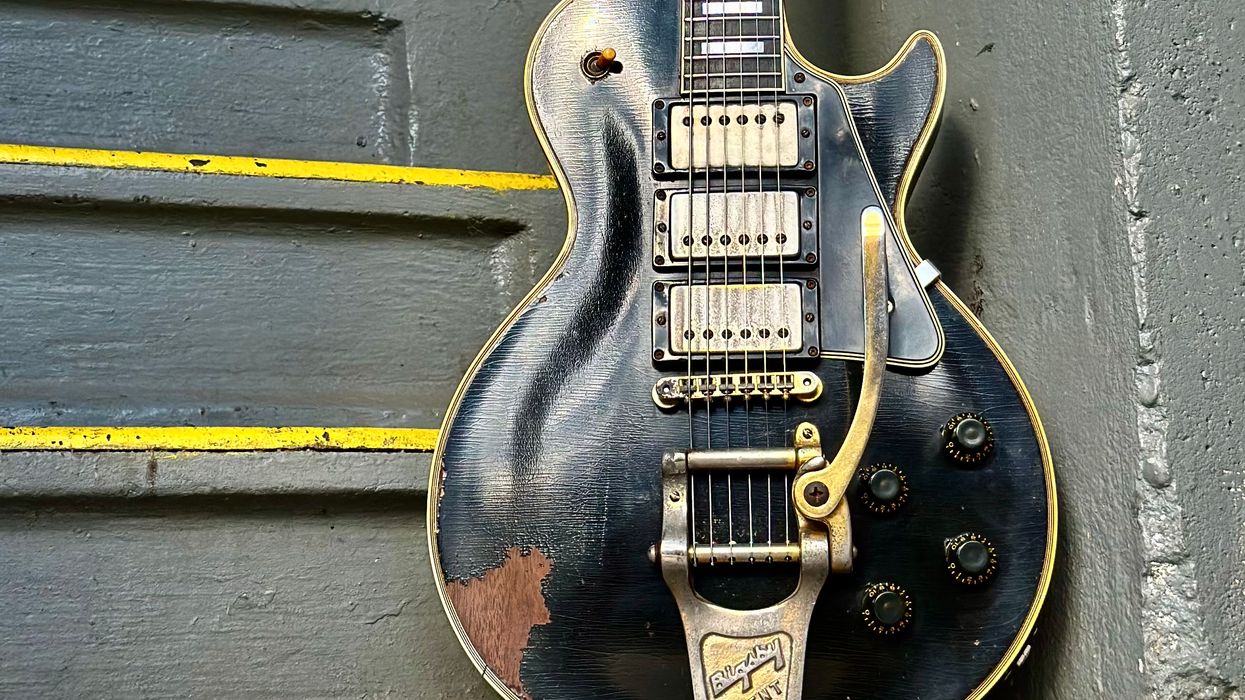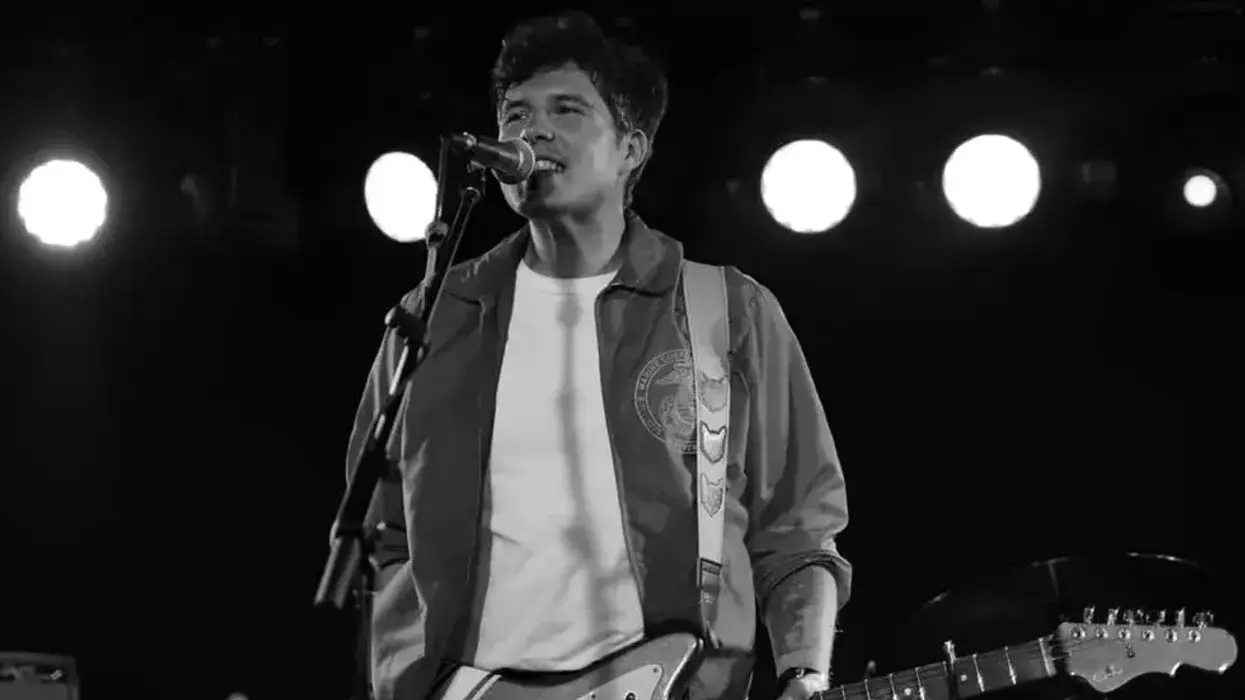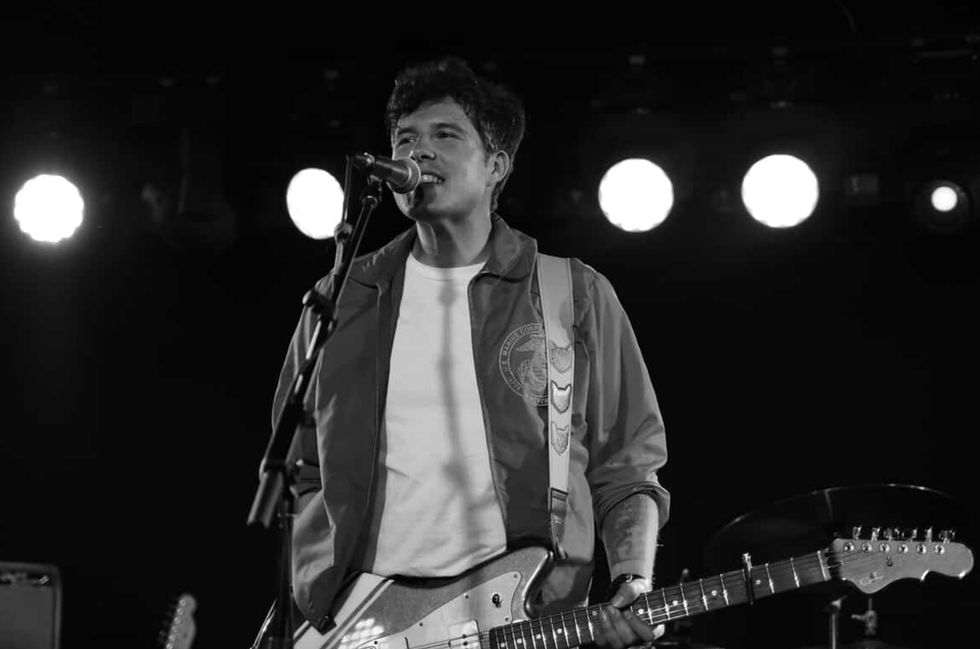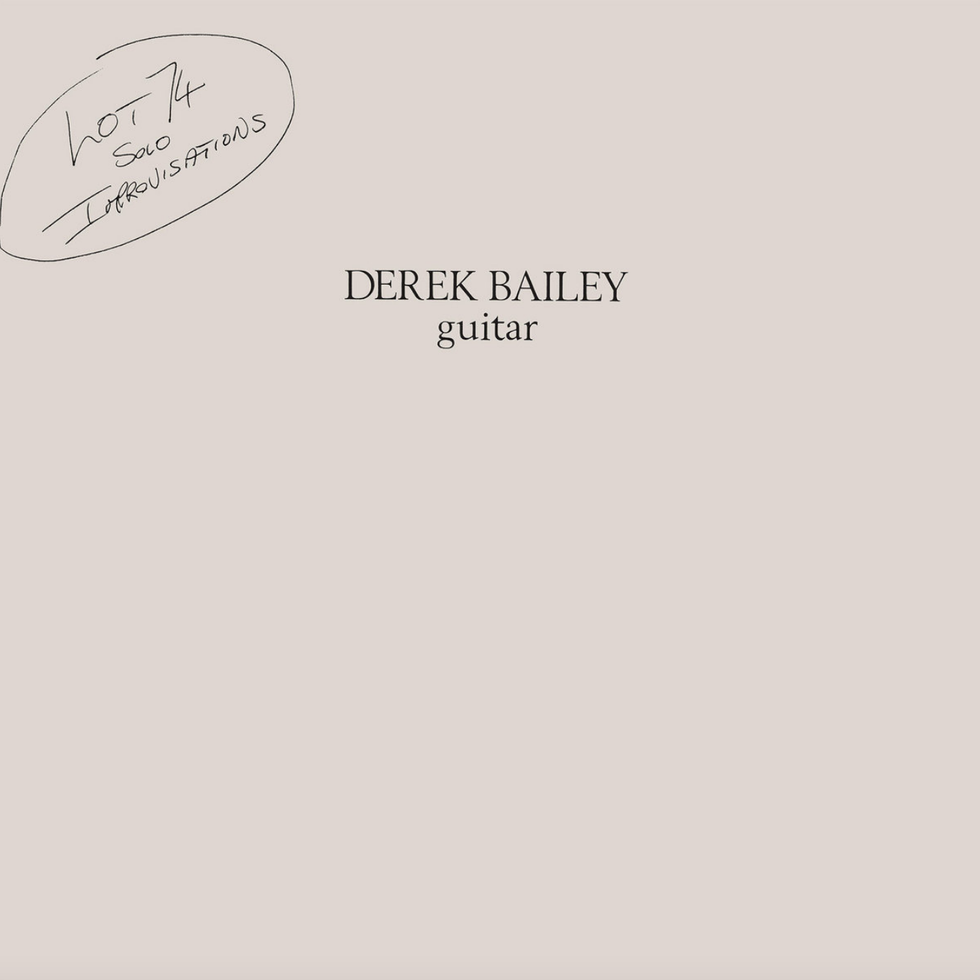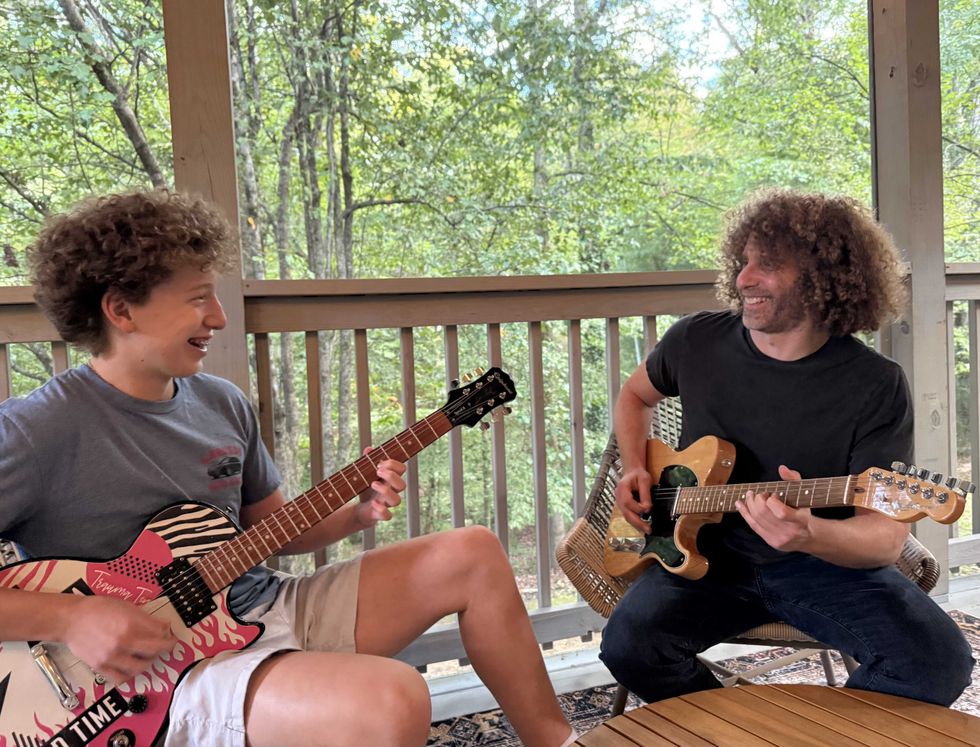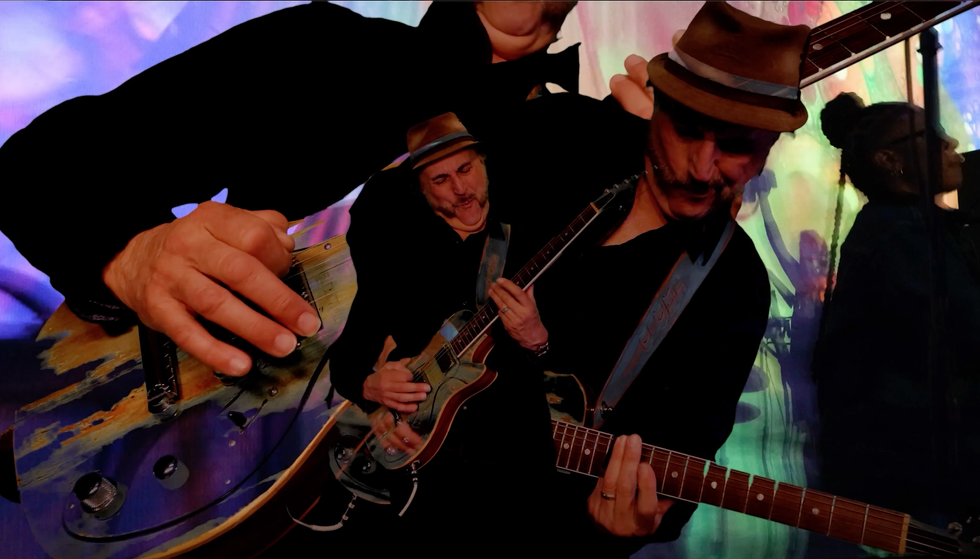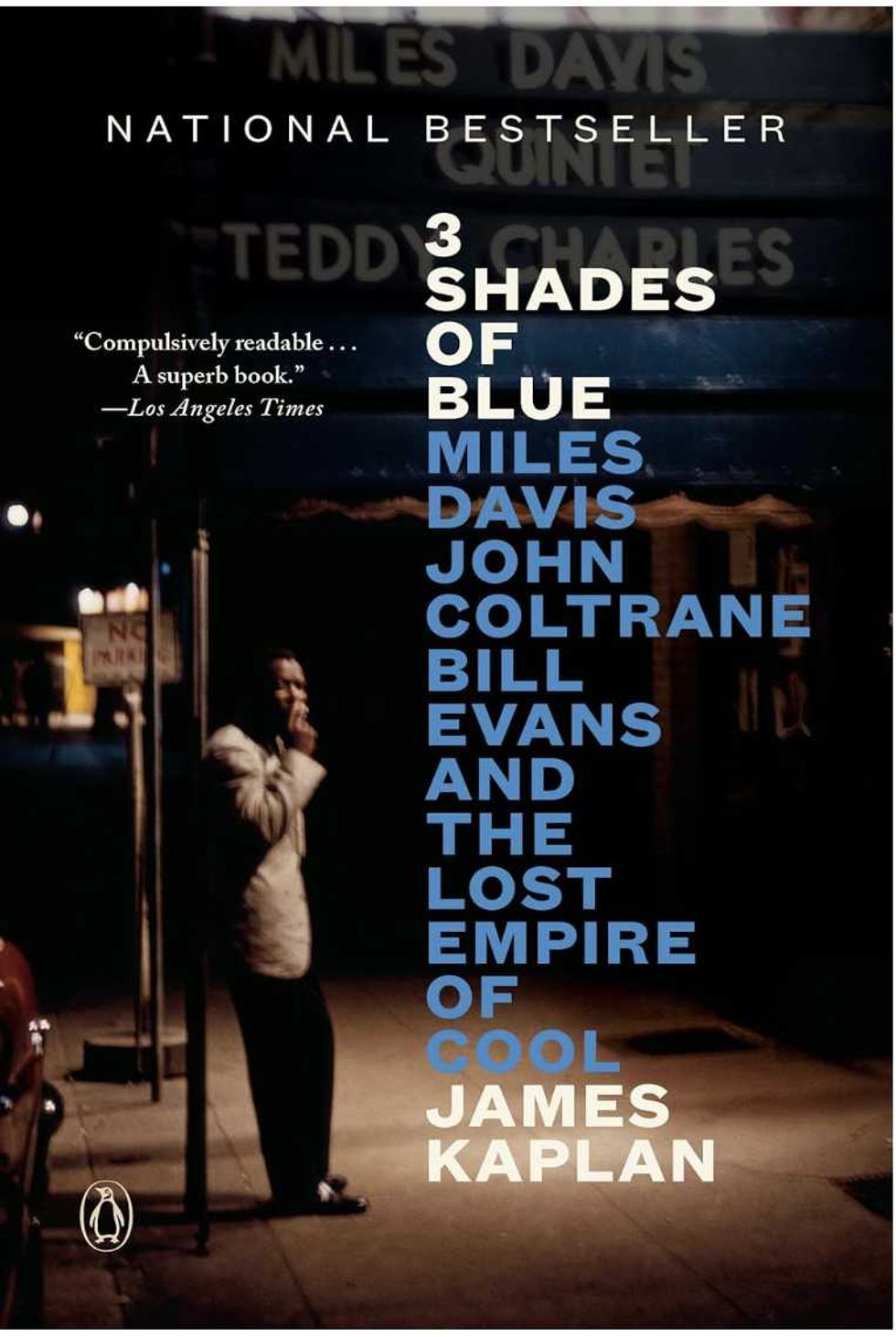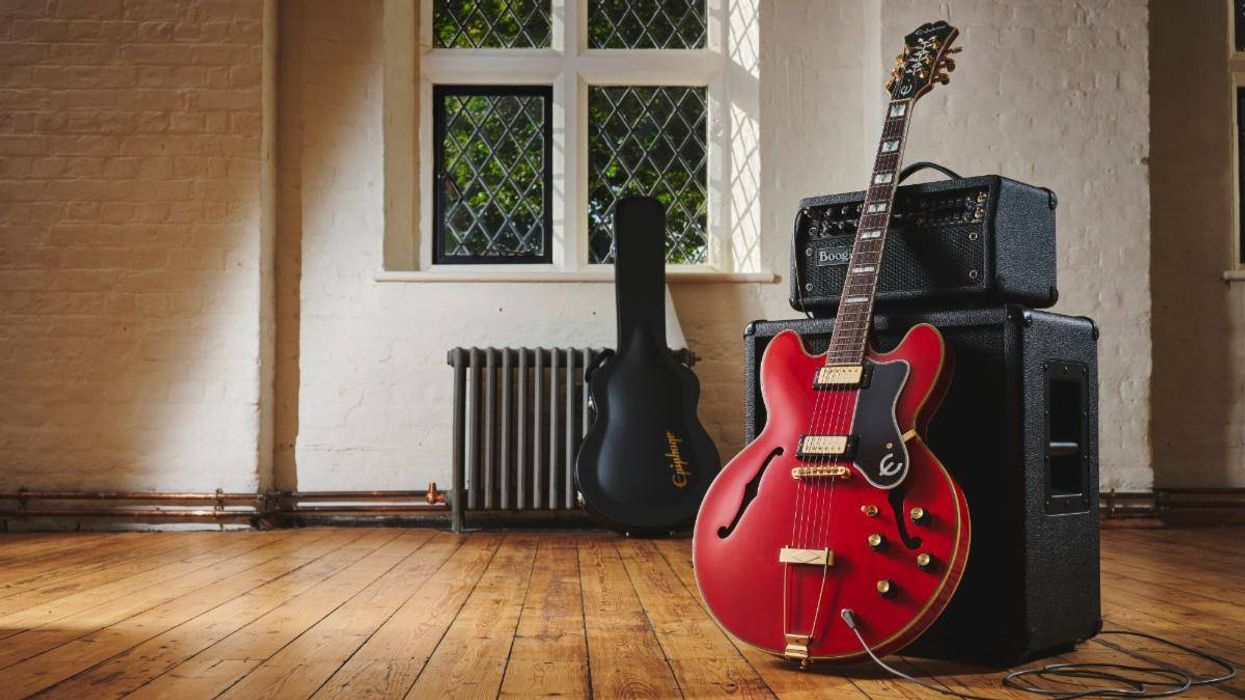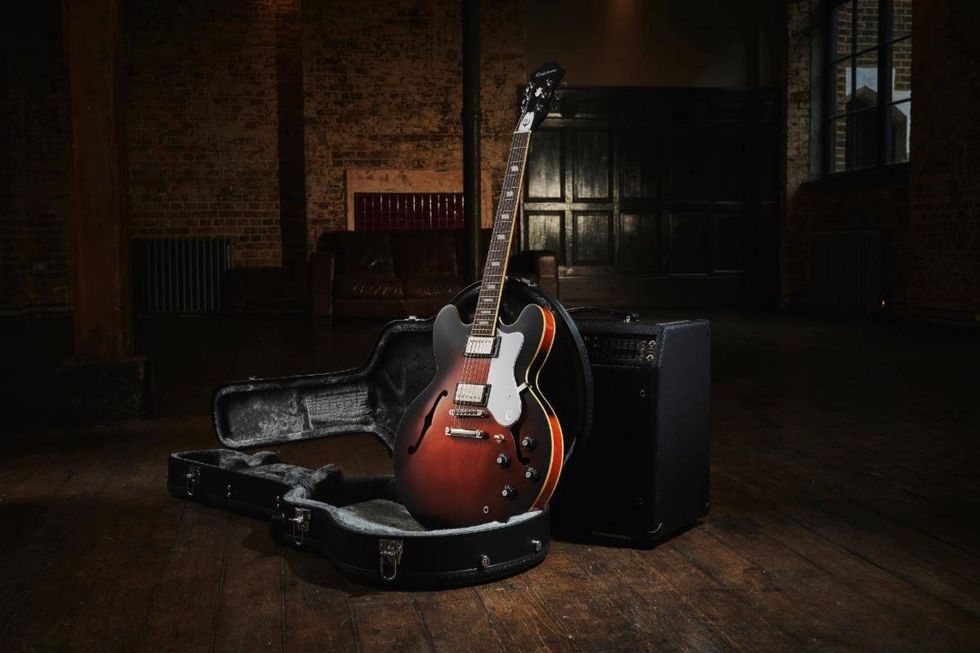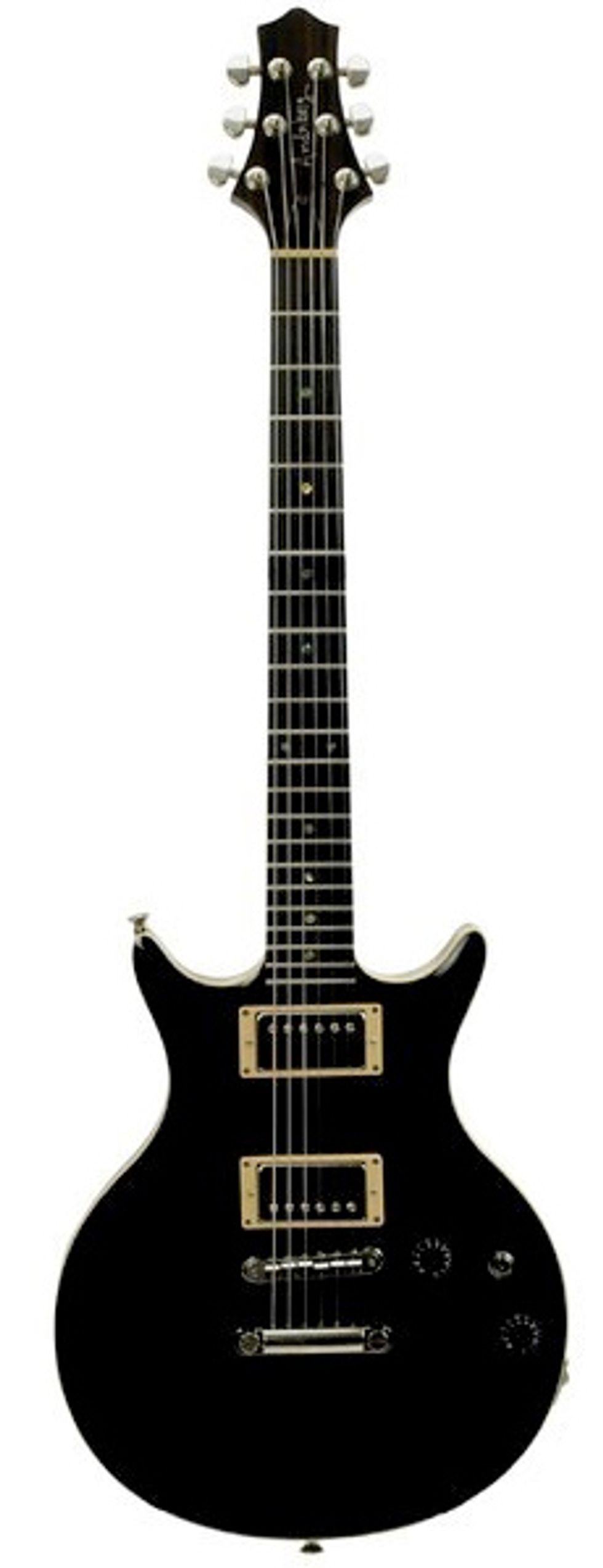 |
That is exactly where Michael Anderberg found his niche, applying the traditional approach to guitar building, and by doing so he’s created, in his own words, “a balls-out rock guitar that’s easy to play.” Not that this isn’t a highly versatile instrument, as I quickly discovered. The Anderberg Wille, named after his grandfather, is a 5-piece laminated neck-thru design, with mahogany neck and body. The top is hand-carved poplar with black lacquer finish and painted binding-style detail. The neck features a two-way adjustable truss rod with a 25” scale rosewood fretboard, 22 medium jumbo frets and a compound radius of 12” to 16”.
Anderberg modeled the Wille on a Les Paul. The main complaint he heard from guitarists about the LP was the weight. He addressed that issue with some unique routed chambers, which also give the Wille even more sustain and resonance then your average chambered electric. Playing the guitar unplugged, I could hear more body resonance, and it seemed louder than other electrics. Plugged in, the sustain is unbelievable. Built from mahogany, the Wille is not a light guitar by any means, but it’s not as heavy as a Les Paul. The bridge is a Schaller Tune-O-Matic with stop tailpiece and Grover tuners. It’s worth mentioning that the guitar arrived at PG in tune, and that I had no major tuning issues while playing this guitar.
Not just a rocker
When I plugged the Wille in, I ran it through a Sound City L120 and an Orange 4x12 cab using a Keeley Mod DS-1 distortion, and Ooh la la Soda-Meiser fuzz box. The Wille comes with Seymour Duncan pickups, a Distortion SH-6 in the bridge and a ‘59 SH-1 in the neck position. There is a 3-way toggle switch, and the single Volume and Tone knobs are both push-pull: the Volume knob splits the neck, and the Tone knob splits the bridge. The pickups Anderberg chose seem to be a magic combination that covers all the bases. Although it’s intended mainly as a rocker, I found it to be a highly versatile instrument for almost any musical genre. The bridge pickup screams with some highgain distortion, providing excellent clarity for shredding, and a tight mid-to-low bass response for rhythm—something any metalhead or rock guitarist will love. It’s not quite what the doctor ordered when it comes to playing clean, but that’s what the neck pickup is for… although if you back off the volume on the guitar a bit, you can get a “dirty clean” with lots of bite.
The mid-position using both pickups is my favorite setting. With the highs backed off a little here, I could achieve more tonal range, providing plenty of low-to-midrange. Without backing off on the guitar’s volume, this setting achieves some full sounding but clear and punchy clean tones that are not too thin. This position also responded admirably when coupled with either the distortion or the fuzz, providing excellent resonance and clarity without sounding too scoopy. In the neck position, the fuzz from the Soda-Meiser was my best friend on the dirty side of the equation, conjuring up rich fuzz tones with plenty of low end. There was a bit of break-up from the amp in this setting, but that may be attributable to the power of the Soda-Meiser because the DS-1 cleaned it up a bit more. Using just the neck pickup for distortion has never been my cup of tea anyway, so I may be a bit biased. As for the clean setting, the guitar really sounded the best in this position: warm tones and great clarity.
The overall sound of this guitar is very Gibson/PRS, especially the bridge position, which reminded me a lot of my old PRS CE24. The neck position has some of the same qualities as well, but had less breakup and better bass response than I ever remember getting out of my PRS. It also worth mentioning that this guitar has no background noise or unruly feedback even with the gain cranked, which I expect from a high-quality instrument. As for playability, SG fans will really love this guitar for its neck. But fans of Paul Reed Smith and Les Paul guitars will also love the Wille. And once again, Anderberg has improved upon them with a slim, symmetrical double cutaway design that allows easy access to all the frets, especially with a neck-thru body. The action is dialed in perfectly and the rosewood fretboard feels great. The smooth finish of the neck provides easy gliding up and down the neck.
I had the opportunity to use the Anderberg Wille in the studio. I used it mostly for some ambient clean parts with an EBow, allowing the resonance of the instrument to provide the bulk of the tone and sustain. I also used it for some heavy down-tuned parts and some harmonic leads. The Wille truly delivered. I actually hadn’t intend to use it so much, but I kept setting down my bari-Tele to pick up the Anderberg. And now I don’t want to give it back.
The Final Mojo
Anderberg currently offers six models, including two basses, and has a six- to eight-week turnaround time—and he will accommodate specific hardware requests. I was hard-pressed to find anything wrong with the Anderberg Wille, and was pretty bummed out when I had to return it. There is something truly wonderful about the Wille, and I can safely say I haven’t been this excited about a guitar since I picked up my first PRS over a decade ago. Now I just need to save some pennies up, so I can have Anderberg build one for me.
Buy if...
you’re looking for a highly versatile rocker that looks, plays and sounds great.
Skip if...
balls-out is a little too much rock for you.
Rating...
MSRP $3200 - Anderberg Custom Guitars - anderberguitars.com |

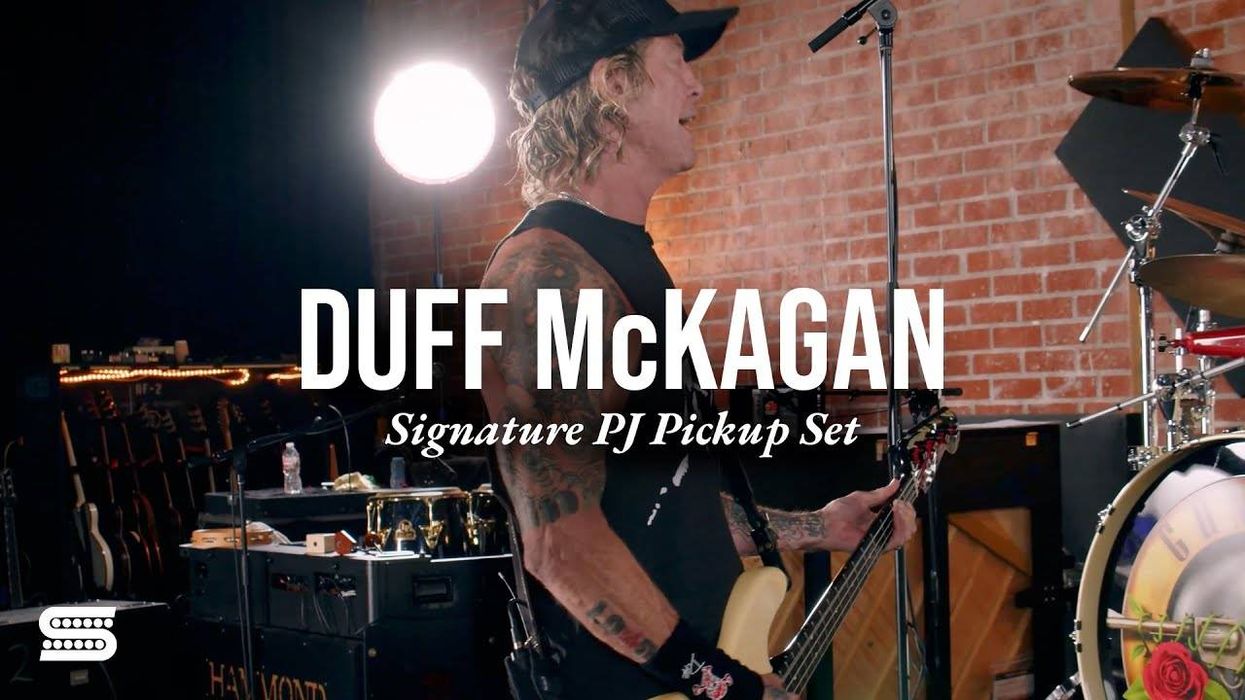
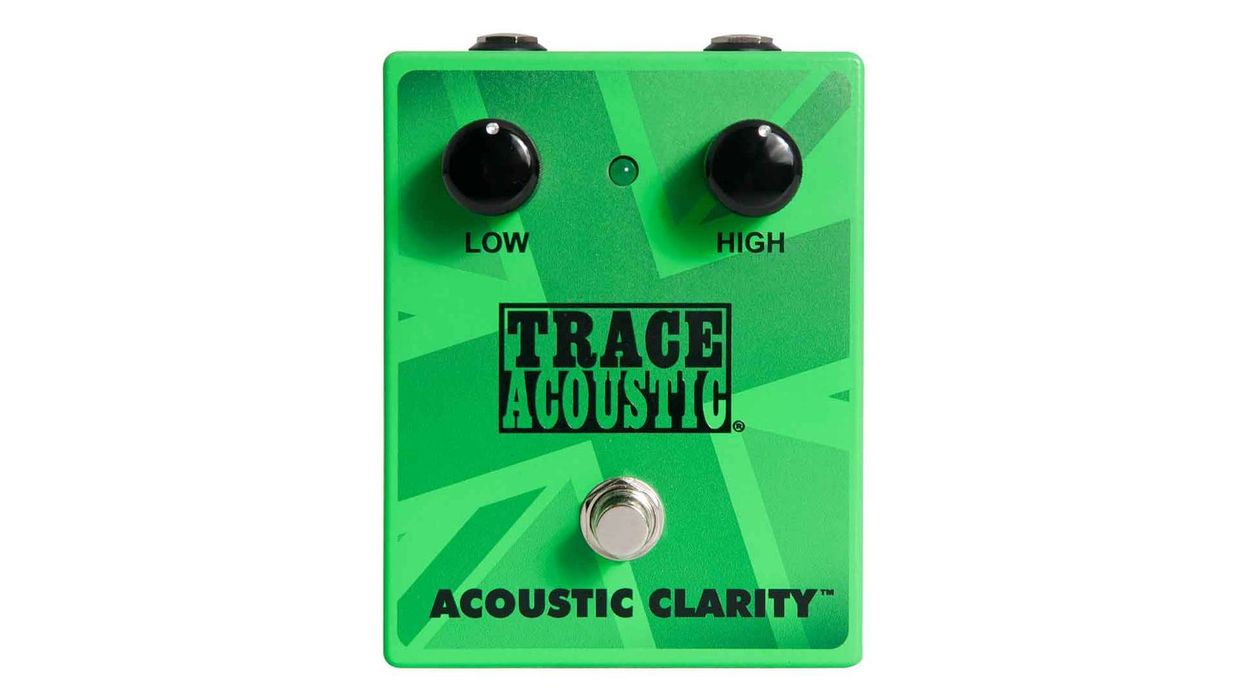

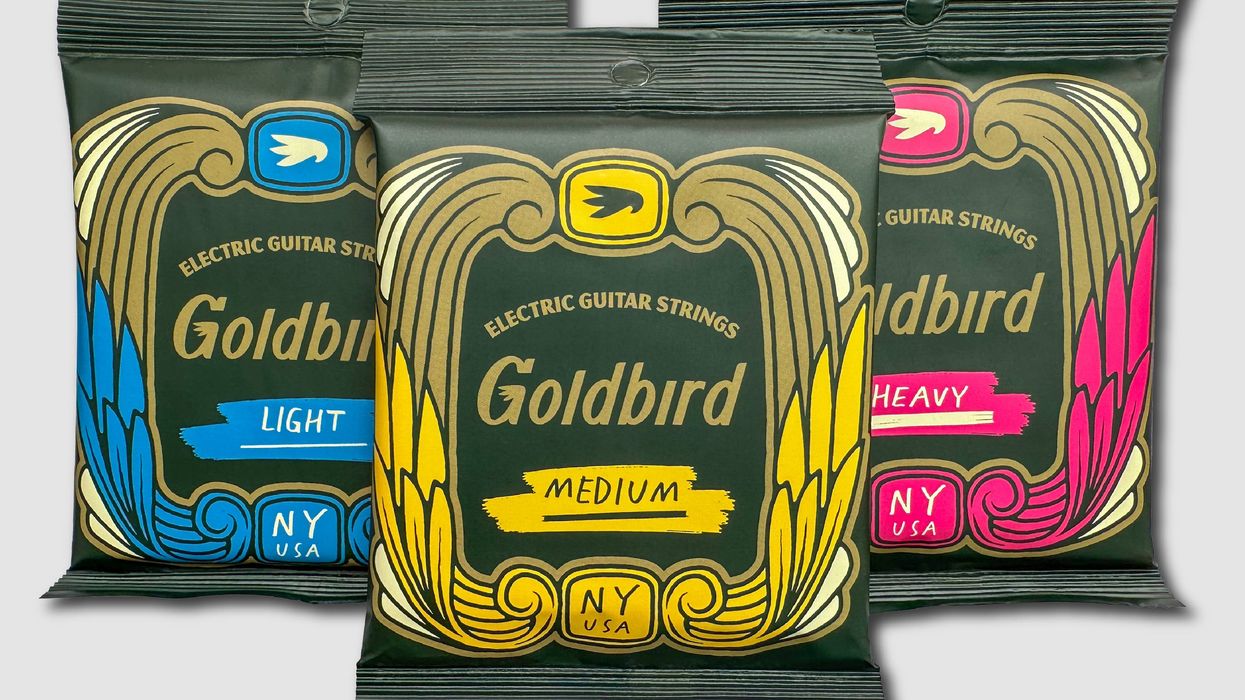
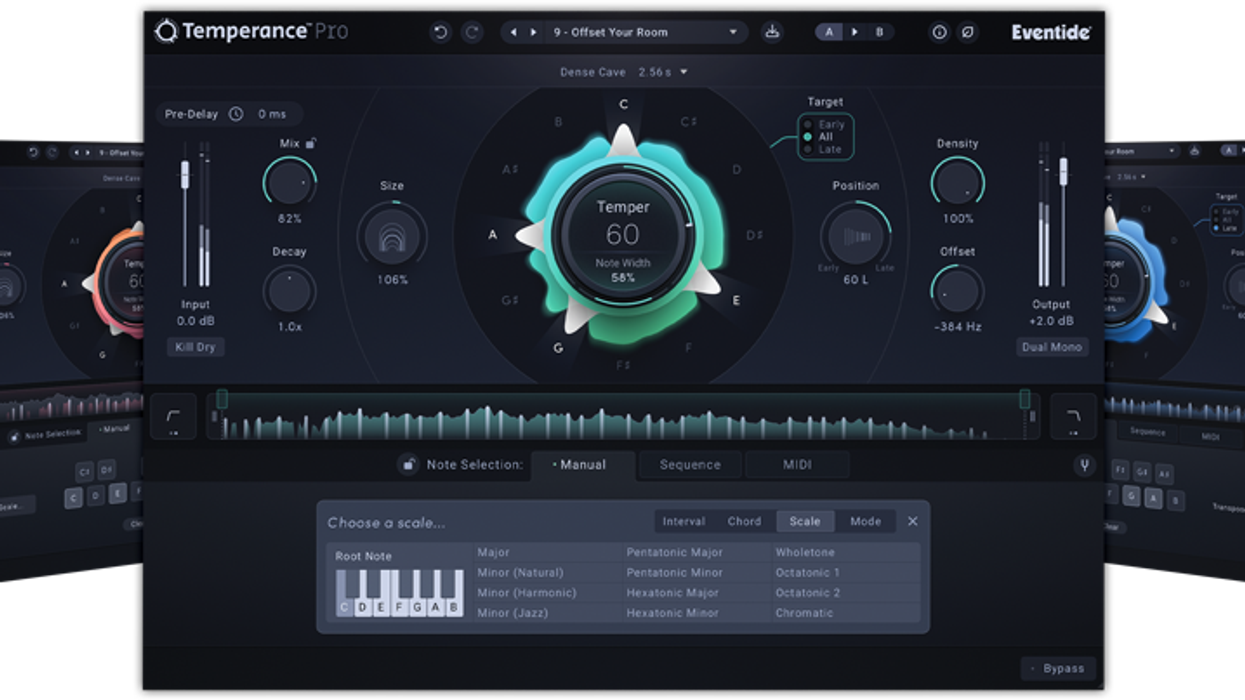
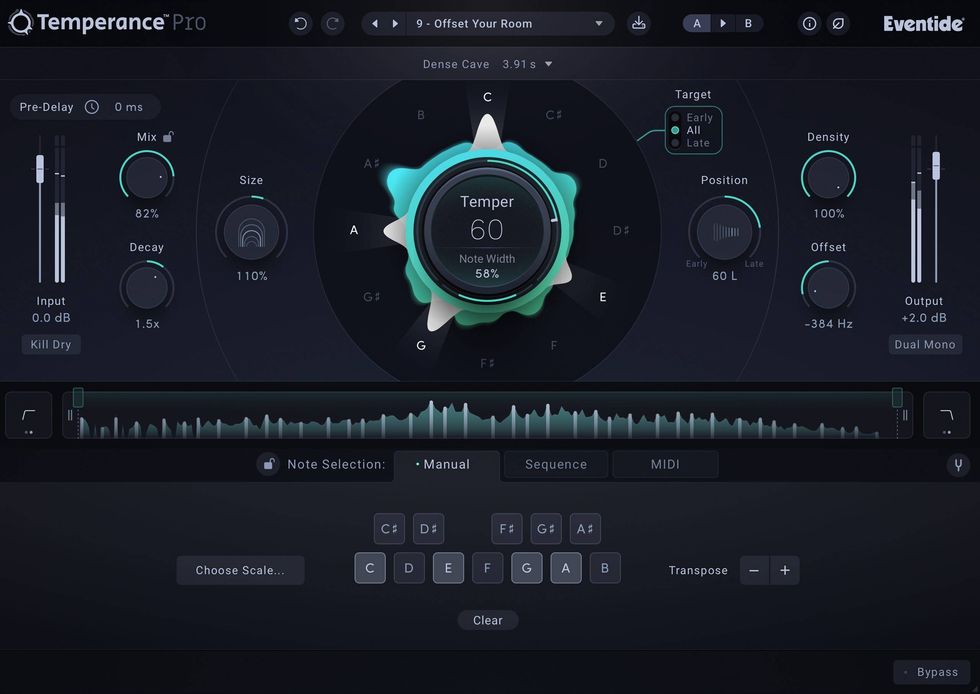
![Devon Eisenbarger [Katy Perry] Rig Rundown](https://www.premierguitar.com/media-library/youtube.jpg?id=61774583&width=1245&height=700&quality=70&coordinates=0%2C0%2C0%2C0)



